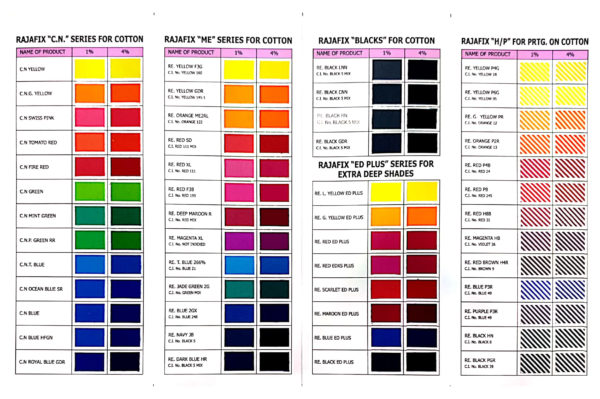Reactive dyes are a class of highly coloured organic substances, primarily used for tinting textiles, that attach themselves to their substrates by a chemical reaction that forms a covalent bond between the molecule of dye and that of the fiber. The dyestuff thus becomes a part of the fiber and is much less likely to be removed by washing than are dyestuff’s that adhere by adsorption.
The first fiber reactive dyes were designed for cellulose fibers, and they are still used mostly in this way. There are also commercially available fiber reactive dyes for protein and poly amide fibers. In theory, fiber reactive dyes have been developed for other fibers, but these are not yet practical commercially. The dyes contain a reactive group that, when applied to a fiber in a weakly alkaline dye-bath, form a chemical bond with the fiber. Reactive dyes can also be used to dye wool and nylon, in the latter case they are applied under weakly acidic conditions.
The most important characteristic of reactive dyes is the formation of covalent bonds with the substrate to be colored, i.e. the dye forms a chemical bond with cellulose, which is the main component of cotton fibers.
Fiber reactive dyes are the most permanent of all dye types. Unlike other dyes, it actually forms a covalent bond with the cellulose or protein molecule. Once the bond is formed, what you have is one molecule, as the dye molecule has become an actual part of the cellulose fiber molecule. No wonder you can safely wash a garment that has been dyed in bright fiber reactive colors with white clothing, a hundred times, without endangering the whites in the least – even if it is all different bright colors, or even solid black! In contrast to all other dyes the reactive dyes bind chemically to the textile fibers, significantly improving the product’s color stability and wash-ability. Thus reactive dying of cotton is currently the most widespread textile dying process in the world.
